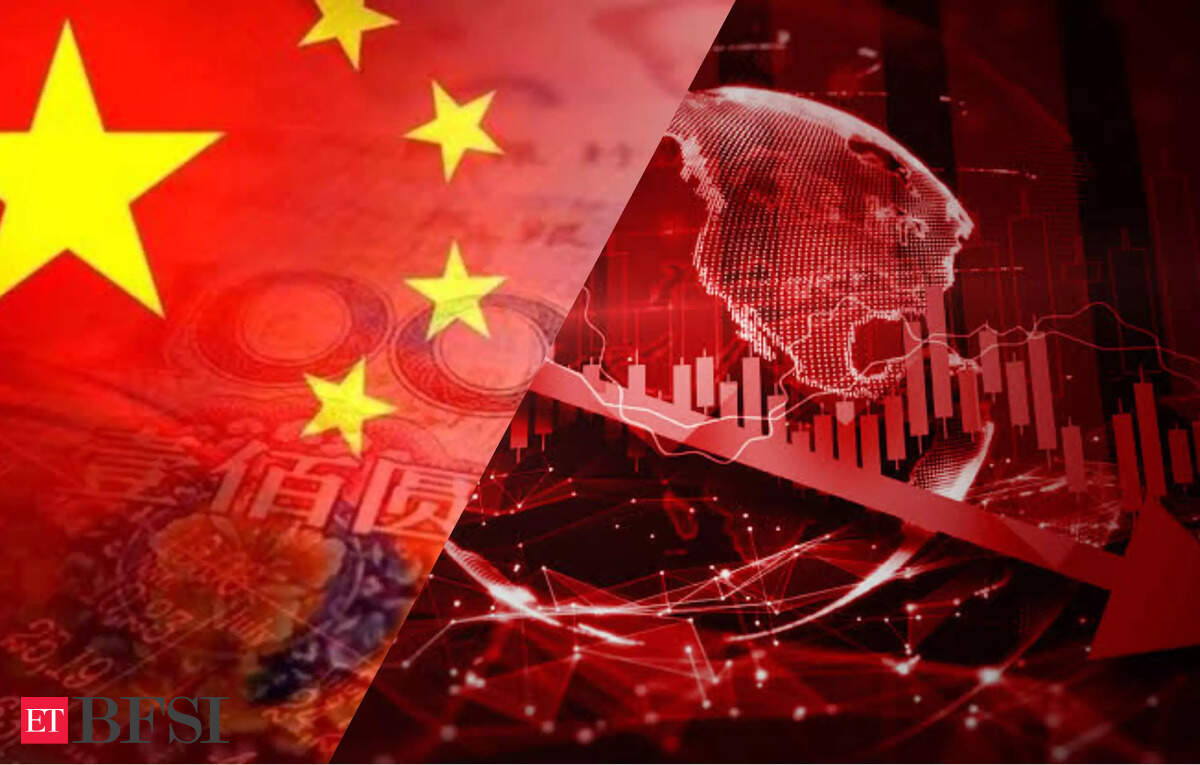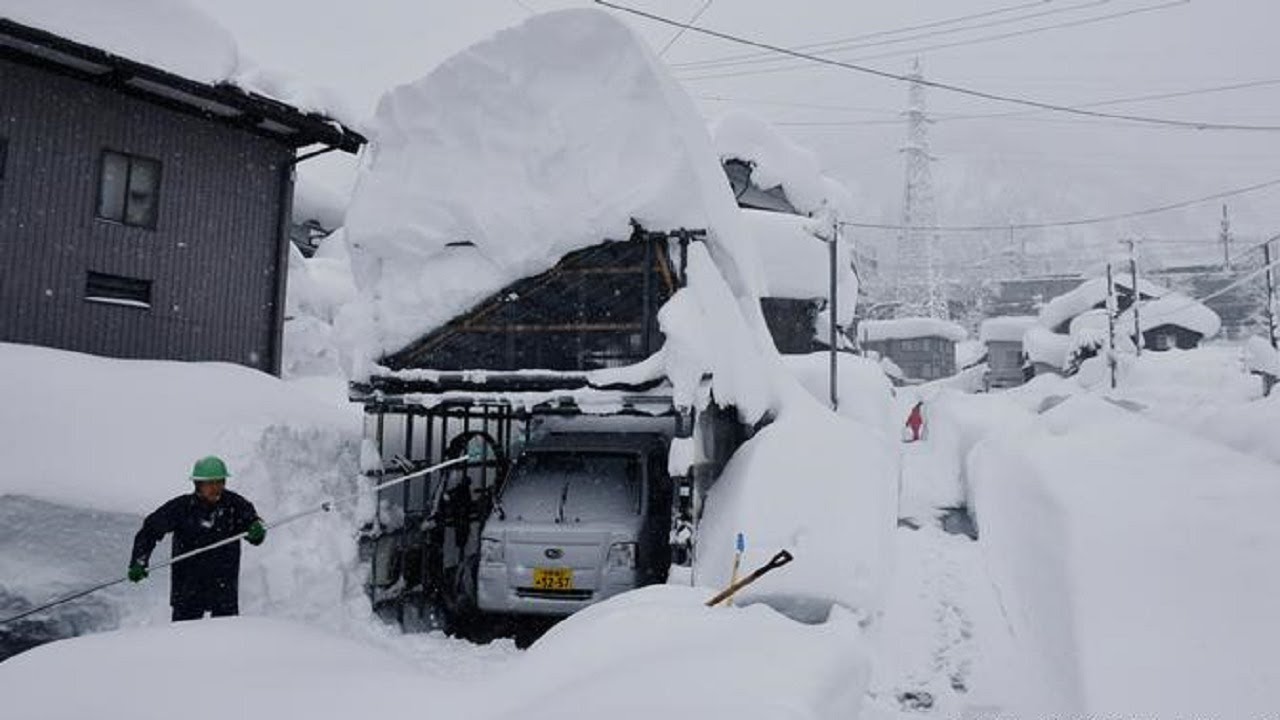Falling Iron Ore Prices: China's Steel Industry Slowdown And Its Consequences

Table of Contents
<p>The recent decline in iron ore prices reflects a significant slowdown in China's steel industry, sending ripples throughout the global economy. This downturn, driven by various factors, has significant consequences for producers, consumers, and the overall market stability of this crucial raw material. This article will delve into the causes and effects of these falling iron ore prices, exploring their impact on the global landscape and offering insights into potential future scenarios and the iron ore price forecast.</p>
<h2>The Slowdown in China's Steel Industry</h2>
<h3>Reduced Construction Activity</h3> <p>China's massive infrastructure projects, once a major driver of steel demand, are slowing significantly. This reduced construction activity is a primary factor contributing to the falling iron ore prices. This slowdown is largely attributed to:</p> <ul> <li><b>Reduced government spending on infrastructure:</b> A shift in government priorities and a focus on debt reduction have led to decreased investment in large-scale infrastructure projects.</li> <li><b>Lower housing starts and completion rates:</b> The real estate sector, a significant consumer of steel, is experiencing a slowdown, resulting in fewer new housing projects and a decline in construction activity.</li> <li><b>Impact on related industries like cement and construction equipment:</b> The reduced demand for steel directly impacts related industries, leading to a ripple effect throughout the supply chain.</li> </ul>
<h3>Environmental Regulations and Production Limits</h3> <p>China's increasingly stringent environmental regulations are forcing steel mills to curb production, impacting steel demand and, consequently, iron ore prices. This includes:</p> <ul> <li><b>Increased scrutiny on emissions and pollution:</b> Stricter emission standards and penalties for non-compliance are pushing steel mills to adopt cleaner production methods, often involving production cuts.</li> <li><b>Closure of inefficient and polluting steel plants:</b> Many older, less efficient steel plants, known for higher emissions, are being shut down, reducing overall steel production capacity.</li> <li><b>Impact on overall steel production capacity:</b> The combination of stricter regulations and plant closures has resulted in a significant reduction in China's overall steel production capacity.</li> </ul>
<h3>Weakening Real Estate Sector</h3> <p>The struggling real estate market in China is another significant contributor to the decreased steel demand. High debt levels and government efforts to curb speculation have led to a slowdown in construction and a decrease in steel consumption. This includes:</p> <ul> <li><b>High debt levels in the real estate sector:</b> Excessive debt in the real estate sector has led to financial instability and a reluctance to invest in new projects.</li> <li><b>Government efforts to curb speculation and inflated property prices:</b> Government policies aimed at controlling property prices have dampened investor enthusiasm and reduced construction activity.</li> <li><b>Impact on construction projects and steel consumption:</b> The overall reduction in new construction projects directly translates to lower steel demand, further depressing iron ore prices.</li> </ul>
<h2>Impact of Falling Iron Ore Prices on Global Markets</h2>
<h3>Reduced Profits for Iron Ore Producers</h3> <p>The decline in iron ore prices directly impacts the profitability of iron ore mining companies worldwide. Lower prices mean:</p> <ul> <li><b>Decreased revenue for mining giants:</b> Major iron ore producers are experiencing significant revenue losses due to the price drop.</li> <li><b>Potential for job losses and reduced investment in mining operations:</b> Lower profits may force companies to cut costs, potentially leading to job losses and reduced investment in new mining projects.</li> <li><b>Impact on the stock market performance of mining companies:</b> The falling iron ore prices have negatively affected the stock market performance of many mining companies.</li> </ul>
<h3>Price Volatility and Market Uncertainty</h3> <p>Fluctuating iron ore prices create significant uncertainty for businesses that rely on this crucial raw material. This volatility leads to:</p> <ul> <li><b>Difficulty in planning and forecasting for steel manufacturers:</b> Steel manufacturers struggle to accurately predict their costs and plan their production schedules.</li> <li><b>Increased hedging costs to manage price risk:</b> Companies are forced to spend more on hedging strategies to mitigate the risk associated with price fluctuations.</li> <li><b>Potential for supply chain disruptions:</b> Price volatility can lead to supply chain disruptions as businesses struggle to secure stable supplies of iron ore at predictable prices.</li> </ul>
<h3>Impact on Global Steel Prices</h3> <p>The reduction in iron ore prices eventually translates to lower steel prices globally, impacting steel manufacturers and downstream industries. This includes:</p> <ul> <li><b>Competitive pressure on steel manufacturers:</b> Lower steel prices increase competition among steel producers, squeezing profit margins.</li> <li><b>Potential for increased steel consumption due to lower prices:</b> Lower steel prices may stimulate demand in some sectors.</li> <li><b>Impact on downstream industries using steel as a raw material:</b> Industries that use steel as a raw material may benefit from lower input costs, but may also face challenges due to market uncertainty.</li> </ul>
<h2>Potential Future Scenarios and Predictions for Iron Ore Prices</h2>
<h3>Economic Recovery in China</h3> <p>A rebound in the Chinese economy could significantly boost steel demand and drive iron ore prices upward. This could be driven by:</p> <ul> <li><b>Government stimulus packages and infrastructure investments:</b> Government intervention to stimulate economic growth could lead to increased investment in infrastructure projects.</li> <li><b>Growth in other economic sectors impacting steel demand:</b> Growth in other sectors, such as manufacturing and automotive, could also contribute to increased steel demand.</li> <li><b>Potential for a price recovery in the medium-to-long term:</b> A strong economic recovery could lead to a significant recovery in iron ore prices.</li> </ul>
<h3>Continued Environmental Regulations</h3> <p>Stringent environmental policies in China may continue to limit steel production and keep iron ore prices relatively low in the long term. This requires:</p> <ul> <li><b>Balancing environmental concerns with economic growth:</b> Finding a balance between environmental protection and economic growth will be crucial in shaping future steel production and iron ore demand.</li> <li><b>Technological innovations in steel production to reduce emissions:</b> Investment in cleaner steel production technologies will be necessary to meet environmental goals while maintaining production levels.</li> <li><b>Long-term impact on production capacity and pricing:</b> The long-term impact of environmental regulations on steel production capacity and iron ore prices will depend on the effectiveness of these policies and technological advancements.</li> </ul>
<h3>Global Geopolitical Factors</h3> <p>Global events and geopolitical factors can significantly influence iron ore prices and market stability. These factors include:</p> <ul> <li><b>Trade wars and tariffs impacting steel and iron ore trade:</b> International trade disputes can disrupt global supply chains and impact iron ore prices.</li> <li><b>Political instability in major iron ore producing countries:</b> Political instability in major producing regions can affect production and supply.</li> <li><b>Uncertainty and volatility in the global commodity market:</b> Overall uncertainty in the global commodity market adds to the volatility of iron ore prices.</li> </ul>
<h2>Conclusion</h2>
<p>The decline in iron ore prices is a clear indicator of the slowdown in China's steel industry, with profound consequences across the global economy. Reduced construction activity, stricter environmental regulations, and a weakening real estate sector are key drivers. The impact extends to decreased profits for iron ore producers, market uncertainty, and fluctuating global steel prices. While a Chinese economic recovery could lead to a price rebound, continued environmental policies and geopolitical factors remain significant uncertainties. Staying informed about the evolving situation and understanding the interplay of these factors is crucial for all stakeholders involved in the global steel and iron ore markets. Understanding the dynamics of <i>falling iron ore prices</i> and their connection to China's steel industry is key to navigating this complex market. Stay informed and monitor changes in <i>iron ore price forecasts</i> for effective decision-making. Careful consideration of the <i>iron ore price forecast</i> is critical for successful navigation of the current market conditions. </p>

Featured Posts
-
 Makron I Tusk Podpisanie Vazhnogo Dogovora Mezhdu Frantsiey I Polshey Eksklyuziv Ot Unian
May 09, 2025
Makron I Tusk Podpisanie Vazhnogo Dogovora Mezhdu Frantsiey I Polshey Eksklyuziv Ot Unian
May 09, 2025 -
 Champions League Semi Finals Barcelona Inter Arsenal Psg Dates
May 09, 2025
Champions League Semi Finals Barcelona Inter Arsenal Psg Dates
May 09, 2025 -
 Nepredskazuemye Snegopady V Mae Slozhnosti Prognozirovaniya Pogody
May 09, 2025
Nepredskazuemye Snegopady V Mae Slozhnosti Prognozirovaniya Pogody
May 09, 2025 -
 Melanie Griffith And Siblings Join Dakota Johnson At Materialist Screening
May 09, 2025
Melanie Griffith And Siblings Join Dakota Johnson At Materialist Screening
May 09, 2025 -
 Warren Buffetts Canadian Successor A Billionaire Without Berkshire Hathaway Shares
May 09, 2025
Warren Buffetts Canadian Successor A Billionaire Without Berkshire Hathaway Shares
May 09, 2025
